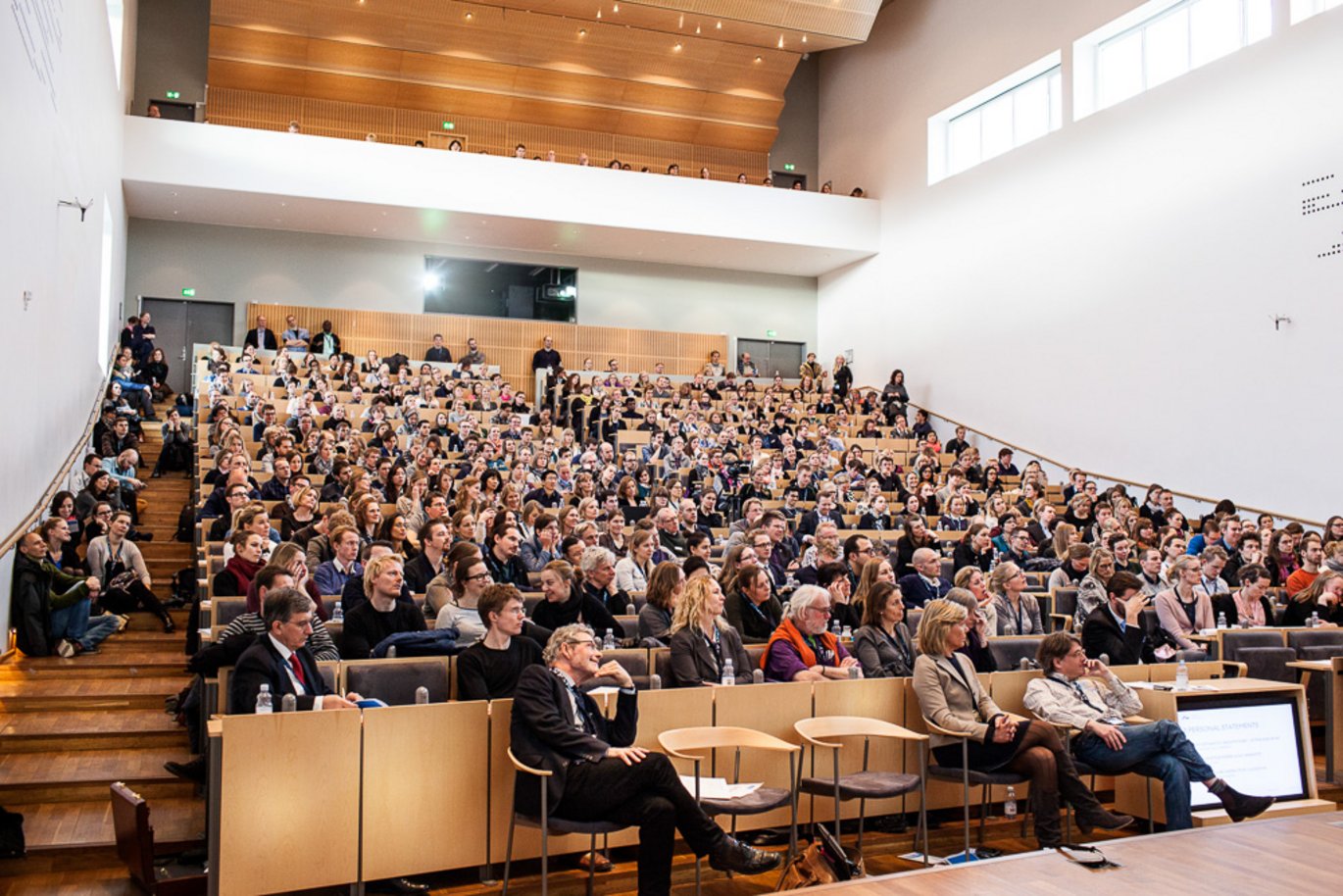Good media coverage can make a big difference
There was no shortage of encouragement to make use of the media when the PhD Day brought research communication into focus.

Postdoc Rasmus Østergaard Nielsen is an example of how a research result and a thoroughly prepared media plan can be a successful combination. For him the two resulted in a postdoc position, and he described the process leading up to this at the PhD Day on 24 January.
Rasmus Østergaard Nielsen opened the debate together with Head of Communications at Health, Ulla Krag Jespersen, in the Per Kirkeby Lecture Theatre, which was filled by a large part of Health’s 650 enrolled PhD students.
Rasmus Østergaard Nielsen’s story is one of the success stories. With help from the communication department he released a press release about one of his PhD articles on running injuries. In journalist jargon the press release received a ‘good play in the media’ around the world and, according to Rasmus Østergaard Nielsen, the massive coverage has not only been significant for the direction of his career. The publicity has also had a large branding value for the area of research. His message to the PhD students was therefore also very clear:
“Don’t hesitate to use the media, devote time to it and don’t be afraid to make compromises,” was just some of the advice from the young postdoc.
You should not underestimate the importance of being seen, both in the public debate and in the academic world, according to Rasmus Østergaard Nielsen:
“When our research is covered in the media it also becomes visible to the boards of foundations and university managements. We also get to show how research funds are used, and the research is given a human face. That helps to both inspire and recruit.”
A panel accustomed to the media
The debate panel at the PhD Day comprised medical doctor, author and TV host Peter Lund Madsen, Managing Director of the newspaper Information Mette Davidsen-Nielsen, Professor at Aarhus University Lars Østergaard, and Professor of Chemistry Leiv Sydnes from the University of Bergen.
All four had the common trait of having close relations with the media. Either as supplier, partner or producer – and in the case of Peter Lund Madsen, a bit of all three. As a veteran media personality he was in no doubt that the audience in the auditorium should utilise their position as researchers and thereby potentially good material for the media.
“You are experts, and health is popular. The population is enormously curious about finding more knowledge, and you should help to deliver it. But make it short and sharp. Our brains are not designed for long, academic explanations,” said Peter Lund Madsen.
One of the essential points made by Lars Østergaard, who is professor in infectious diseases at the Department of Clinical Medicine, was that honesty is the best policy.
“Look at the journalist as a partner who you tell the truth to. Do not try to over-promote a message where there is not enough meat on its bones,” said Lars Østergaard.
Information’s Managing Director Mette Davidsen-Nielsen urged the PhD students to be proactive in the media.
“Don’t be afraid to throw yourself into it,” was the advice from the newspaper managing director, who used the opportunity to advertise the newspaper’s media school for PhD students.
The Norwegian professor in Chemistry, Leiv Sydnes, shared the other panellists’ point of view about the significance of being visible in the media. To get the surrounding society to engage with research, researchers must be able to communicate their research in an understandable manner. It is a part of the democratic process, as he put it. He asked the young researchers to think strategically.
“A collaboration with the media is part of the efforts to procure research funding. But be careful as scientific integrity must not be damaged. You must never fall into the trap of ‘over-promoting’ a project and thus risking scientific dishonesty,” was the warning from the Norwegian scientist, who is also chairman of the ‘Norwegian Academy of Science and Letters.’
- The PhD Day was also the setting for the award of the Fogh Nielsen grant. Read the article “PhDs battled it out for research awards’ to find out who received the DKK 100,000.
- Materials about the PhD Day are collected at the PhD Day website.
- You can also see video clips of five PhD students from Health at the PhD Day website.
- Get help with research communication from the communication officers at HE AU Communication.